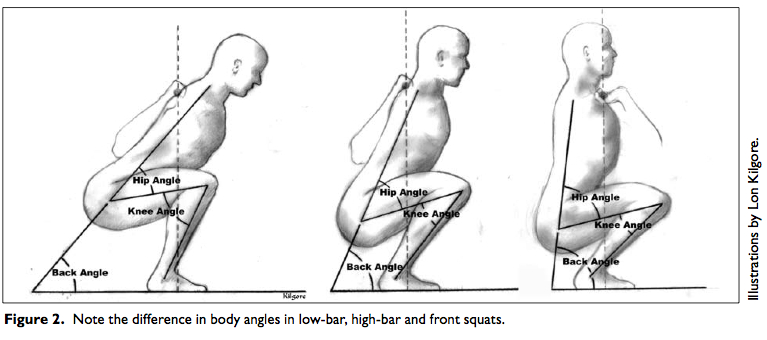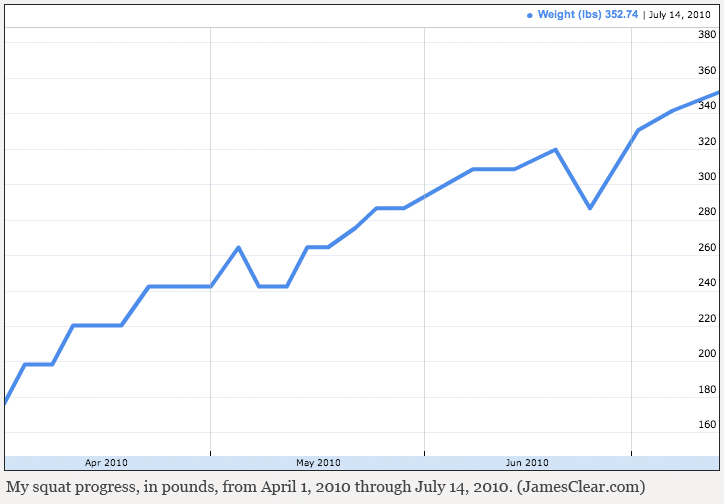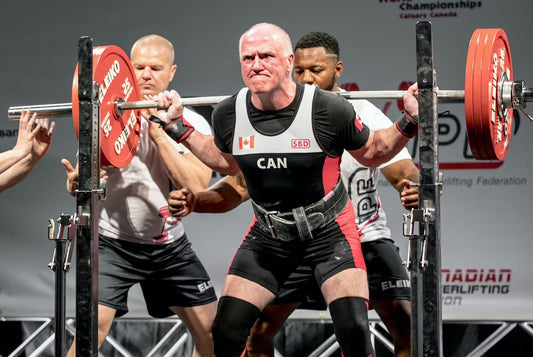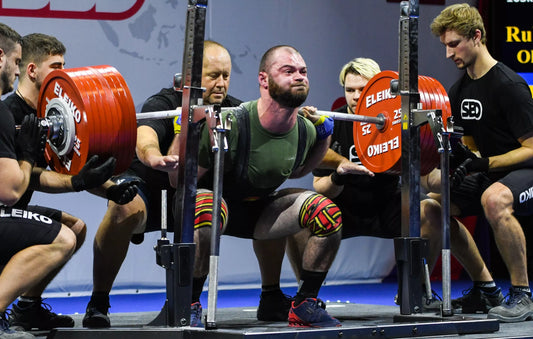How to Squat More Weight: A Detailed Guide
Squatting is one of the most effective exercises for developing lower-body strength, but increasing weight while maintaining good form requires strategic adjustments. This guide explores key techniques to help you squat heavier, enhance stability, and optimize your progress.
1. Mastering the Fundamentals of Squat Mechanics
Before adding weight, perfecting squat mechanics ensures safety and efficiency.
Key Form Principles
Foot Positioning: Stand with feet shoulder-width apart, toes slightly turned out (~15-30 degrees).
Neutral Spine Alignment: Keep your chest up, engage your core, and avoid excessive forward lean.
Knee Tracking: Your knees should align with your toes throughout the movement, preventing inward collapse.
Depth & Hip Engagement: Aim for at least parallel depth (thighs parallel to the ground) or deeper, engaging glutes and hamstrings.

Common Mistakes to Avoid
❌ Rounding the Back → Increases injury risk
❌ Letting Knees Cave In → Reduces power & stability
❌ Shallow Squats → Limits muscle activation
❌ Bouncing Out of the Bottom → Decreases control
2. Strengthening Essential Muscles for Squat Stability
Squats require activation across multiple muscle groups. Strengthening these areas improves squat mechanics and allows for heavier lifting.
Core Strength & Bracing Techniques
A strong core stabilizes the torso during squats, preventing excessive movement.
Bracing Technique: Before descending, take a deep breath, expand your diaphragm, and engage your abs.
Recommended Core Exercises: Planks, dead bugs, hanging leg raises, and weighted ab work.

Hip Mobility & Glute Activation
Limited hip mobility restricts squat depth and form. Address mobility issues with:
Hip Flexor Stretches: Improves range of motion
Glute Bridges & Bulgarian Split Squats: Enhances glute activation
Dynamic Warm-Ups: Incorporate hip openers before lifting

Ankle Mobility & Stability
Weak ankles compromise squat depth and control. Enhance mobility with:
Heel-Elevated Squats: Provides a deeper range of motion
Calf Stretching & Strengthening: Helps with dorsiflexion
Balance Training: Improves ankle stability under heavy loads

3. Strategic Training Methods for Squat Progression
Gradual overload and training variations ensure long-term strength development.
Progressive Overload Approach
Increasing squat weight requires controlled progression: ✔ Increase Weight Gradually: Aim for 2.5-5% weight increments every few weeks.
✔ Monitor Reps & Volume: Adjust rep ranges (e.g., 5-8 reps for strength, 8-12 reps for hypertrophy).
✔ Track Performance: Keep a log of weights lifted and progressions.
📷 Suggested Image: A training progression chart with incremental weight increases.
Key Squat Variations to Build Strength
1️⃣ Pause Squats: Holding the bottom position strengthens muscle control.
2️⃣ Tempo Squats: Slowing the eccentric (lowering) phase builds strength.
3️⃣ Box Squats: Teaches proper depth and explosive power.
4️⃣ Front Squats: Enhances core and quad strength, improving overall squat mechanics.

4. Recovery & Injury Prevention
Squatting heavier places stress on muscles and joints. Prioritizing recovery ensures steady progress while preventing injury.
Warm-Up & Mobility Routine
Dynamic Stretches: Hip circles, lunges, and leg swings
Activation Drills: Glute band work, core engagement exercises
Warm-Up Sets: Begin with lighter squats before heavier lifts

Post-Squat Recovery Essentials
✔ Hydration & Nutrition: Support muscle repair with adequate protein intake
✔ Rest & Sleep: Allow recovery between heavy squat sessions
✔ Foam Rolling & Stretching: Relieve tightness in muscles
✔ Listen to Your Body: Avoid pushing through pain or discomfort

Final Thoughts: The Path to Heavier Squats
Squatting heavier isn’t just about adding weight—it’s about refining technique, stability, and mobility while progressing strategically. Focus on core engagement, mobility improvements, and progressive overload, and soon you’ll see significant gains in strength.







